Notothylas is a genus of hornworts in the family Notothyladaceae. The genus is found globally, but is usually overlooked. It is the smallest of all the hornworts, with a yellow-green gametophyte thallus that is seldom more than a centimeter in diameter, and usually much smaller.

Hypnale hypnale is a venomous pit viper species endemic to India and Sri Lanka. Common names include the hump-nosed viper, Merrem's hump-nosed viperhump-nosed pit viper, and Oriental hump-nosed viper.
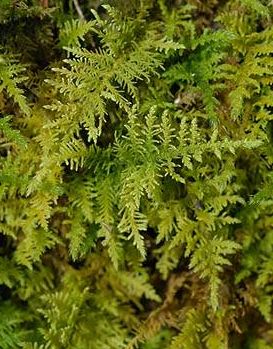
Hypnales is the botanical name of an order of Bryophyta or leafy mosses. This group is sometimes called feather mosses, referring to their freely branched stems. The order includes more than 40 families and more than 4,000 species, making them the largest order of mosses.
Ilma Grace Stone, née Balfe, was an Australian botanist who specialised in bryology. She was an author, collector, and researcher of Australian mosses, a subject on which she lectured and wrote.

Ptilium crista-castrensis, the knights plume moss or ostrich-plume feathermoss, is a moss species within the family Pylaisiaceae, in the class Bryopsida, subclass Bryidae and order Hypnales.

Hylocomiaceae is a family of mosses in the order Hypnales. It includes 14 genera and around 36 species.

Leucobryaceae is a family of haplolepideous mosses (Dicranidae) in the order Dicranales.

Neckeraceae is a moss family in the order Hypnales. There are about 200 species native to temperate and tropical regions. Most grow on rocks, or other plants.
Symphyodontaceae is a moss family in the order Hypnales.
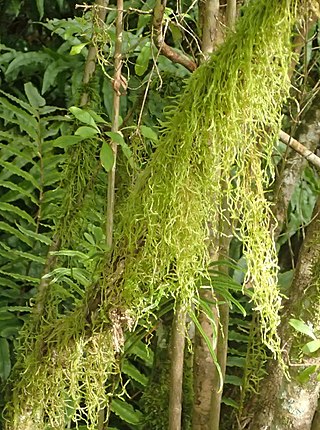
Weymouthia is a genus of two species belonging to the feather mosses. Weymouthia occurs in southern South America, New Zealand and south-eastern Australia and Lord Howe Island. It is characterised by (i) its monopodial, often hanging growth form; (ii) slight differences between stem and branch leaves; and (iii) the straight perichaetial leaves. In contrast to other genera in the Lembophyllaceae, secondary stems appear unable to arch back to the substrate and then root and form a new creeping stem.
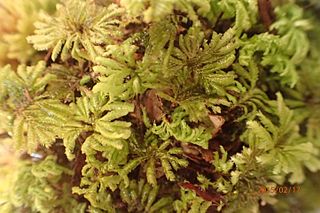
The Hypopterygiaceae are a family of mainly tropical mosses of the order Hypopterygiales, a sister-group to the Hookeriales and Hypnales.

William Campbell Steere (1907–1989) was an American botanist known as an expert on bryophytes, especially arctic and tropical American species. The standard author abbreviation Steere is used to indicate this person as the author when citing a botanical name.
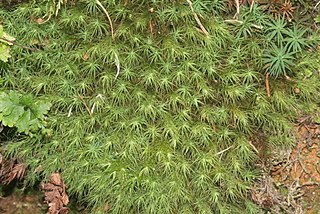
Bartramiales is an order of moss.
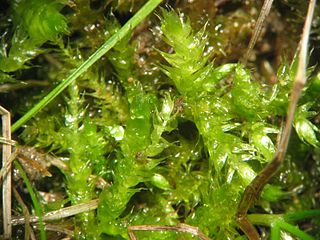
Brachytheciaceae is a family of mosses from the order Hypnales. The family includes over 40 genera and 250 species.
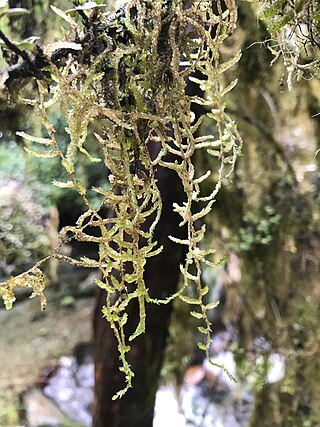
Lembophyllaceae is a family of pleurocarpous mosses in the order Hypnales. It was originally described by Finnish botanist Viktor Ferdinand Brotherus (1849–1929) in 1909. The family is mainly found in Australasia and southern South America.
Daniel Howard Norris was an American botanist dedicated to the study of mosses, and was a renowned expert on the California bryoflora. The standard author abbreviation D.H.Norris is used to indicate this person as the author when citing a botanical name.
Wilfred "Wilf" Borden Schofield was a Canadian botanist, specializing in mosses and liverworts. He was considered by many "the foremost bryologist in Canada".

Fontinalaceae is a family of mosses belonging to the order Hypnales.
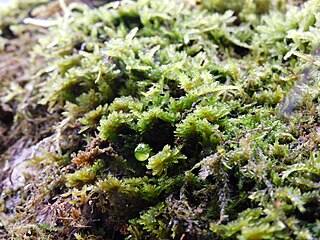
Leptodontaceae is a family of mosses belonging to the order Hypnales. There are 3 genera with a worldwide distribution.














